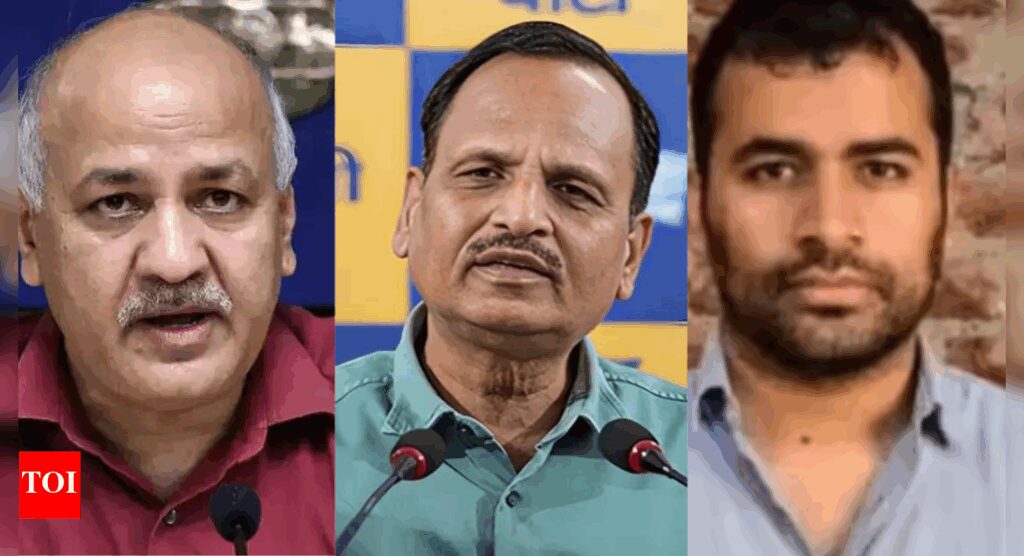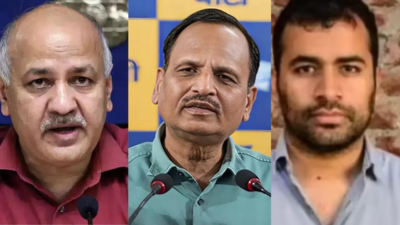NEW DELHI: New “power centres” have emerged within the ruling Aam Aadmi Party (AAP) in Punjab, as its Delhi-based top leadership has decided to spend more time in the border state, the only one which the party currently governs following the defeat in Delhi after over a decade, in February.The formal beginning came when Punjab affairs were entrusted to senior leaders and former Delhi ministers Manish Sisodia and Satyendra Jain, according to The Economic Times. Both Sisodia and Jain were among the AAP heavyweights who lost in the national capital, as did party supremo and ex-CM Arvind Kejriwal and Saurabh Bharadwaj, among others.“The ministries have been evenly divided between the two leaders, who are spearheading policy initiatives. While Sisodia is handling key portfolios like finance and education, Jain has health and social welfare related portfolios,” Punjab officials who did not be wish to be named, told ET.Earlier, Punjab affairs had been entrusted to Rajya Sabha MPs Raghav Chadha and Sandeep Pathak. However, Chadha is now focusing on creating a profile separate from his party, and Pathak is in-charge of its unit in Chhattisgarh.The Vijay Nair influenceAnother individual who has emerged as a new power centre here is Vijay Nair, AAP’s communications head and an accused in the Delhi liquor policy case. As per party sources, in the middle of the recent Ludhiana West by-election, which the AAP candidate won, Nair asked eight members of Punjab chief minister Bhagwant Mann’s social media team to resign, prompting the Punjab leadership to retaliate.“This (resignation of Mann’s social media team) was done by Nair, who said the team’s conduct was not above board. Within days, the Punjab leadership sought the resignation of two members of Nair’s team involved in media management on the grounds of corruption. The logic was – you got Punjab people sacked, we will drive Delhi people out,” a source said.The corruption factorAlso, there is “angst” within the cadre which feels the party is no longer what it claimed to work for, especially the anti-corruption plank.“If you look at the boards and commissions across Punjab, they are filled with Delhi’s consultants. They are running the show. The demand for Lokpal was the mainstay of the movement that brought AAP into existence. Where is Lokpal now that AAP is in government?” asked ex-spokesperson Iqbal Singh.Punjab’s industry owners also complain – openly – of the “rate of corruption” going up.“The rate of corruption has gone up four or five times. Earlier, just for ease of clearances, four of us industry owners used to pay a liaison person money to get certificates and permissions. There was no illegality but just to expedite the process. Now the person is charging 50% more,” the owner of a Ludhiana-base hosiery unit stated.BJP vs AAPAttacking the Kejriwal-led outfit, Punjab BJP president Sunil Jakhar termed the former as “super CM” and Mann as “de facto CM.”“The entire governance has been outsourced. This is the first time that Cabinet meetings are taking place not in the CM’s office but at the CM’s residence. This gives enough leeway for outsiders to attend these meetings. It is not Mann who is presiding over the Cabinet but Kejriwal and Sisodia,” Jakhar alleged.However, state AAP spokesperson Neel Garg defended the leadership’s involvement in Punjab affairs. He also denied any “rift” between the two state units.“Delhi is getting involved in a guidance role. When elections take place, it is the party that goes for polls not the government. The central leadership is guiding the party how to run police matters. It is for the benefit of Punjab,” Garg said.What next? Sensing it is in a difficult position in Punjab, where its maiden term will end in March 2027 followed by the assembly election, the AAP has launched various initiatives, including one against the drug menace, an emotive issue here. Under “Yudh Nashian Virudh” (War Against Drugs) campaign, the police have apprehended 19,735 smugglers in 120 days.The state government has also introduced the land pooling scheme for the planned development of its cities. It is also looking for investments to fund its welfare initiatives.







